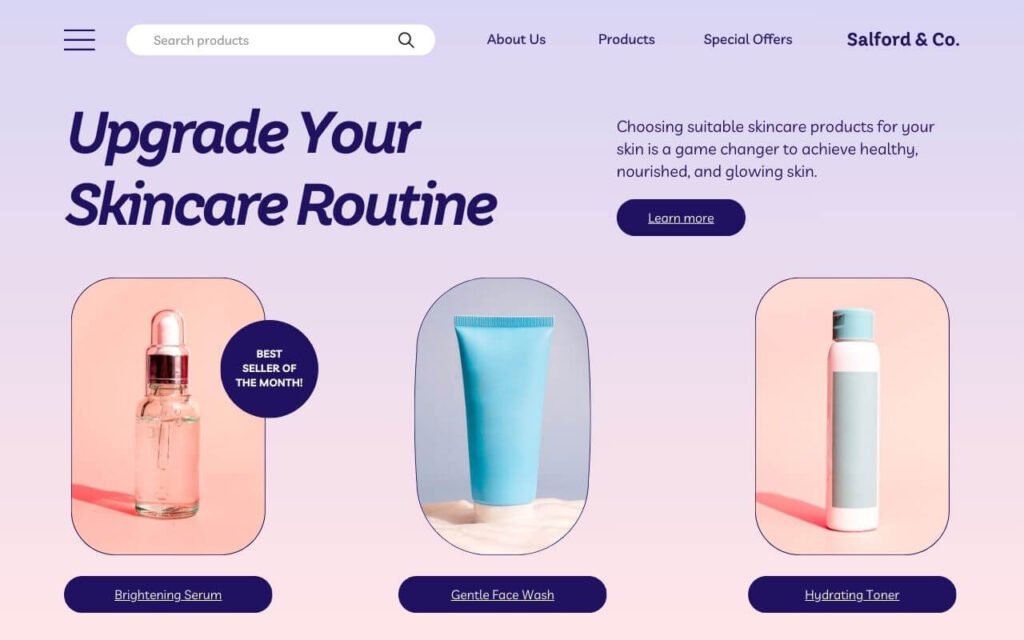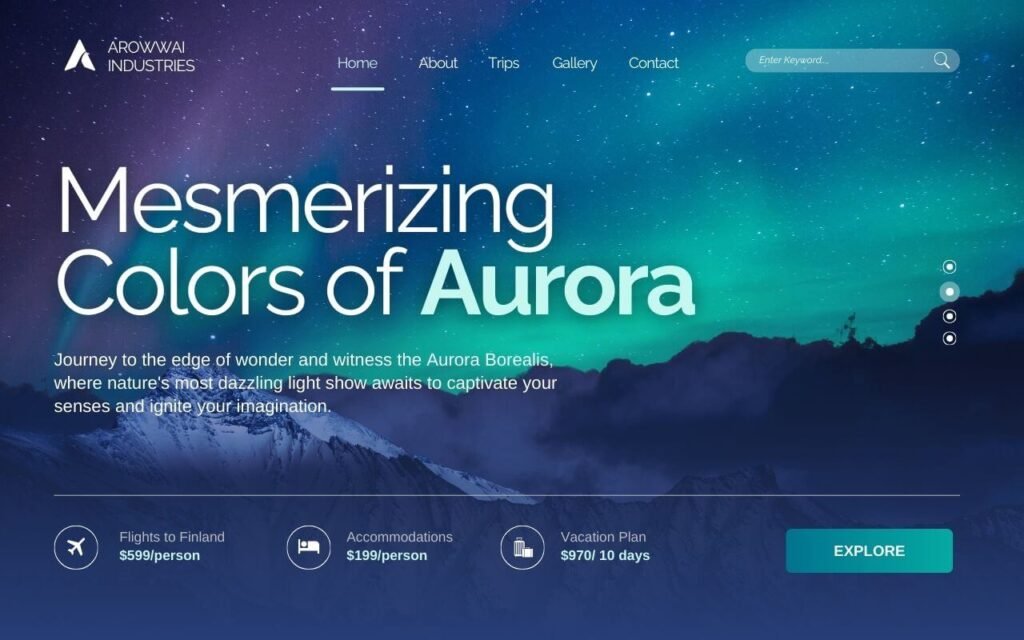Essential Tips for Designing an Effective Free Website in 2025
To create a website that resonates with users, it’s crucial to know who they are. Start by identifying key demographics, such as:
- Age, gender, location, and interests**: Understanding these factors helps tailor your content and design to meet the preferences of your audience.
- Analyzing user behavior and preferences: Use tools like Google Analytics to see how users interact with your site. This data can guide your design choices.
- Creating user personas for better design focus**: Develop fictional characters that represent your ideal users. This can help you visualize their needs and preferences during the design process.
Gathering User Feedback
Essential Tips for Designing an Effective Free Website in 2025 User feedback is invaluable for refining your website. Consider these methods:
- Utilizing surveys and questionnaires: Create simple surveys to gather insights on user satisfaction and areas for improvement.
- Conducting user testing sessions: Invite real users to navigate your site while observing their interactions. This can reveal usability issues you might not have noticed.
- Implementing feedback loops for continuous improvement: Regularly update your site based on user feedback to keep it relevant and user-friendly.
Analyzing Competitor Websites

Understanding your competition can provide Essential Tips for Designing an Effective Free Website in 2025 insights into what works and what doesn’t:
- Reviewing strengths and weaknesses of competitors: Analyze competitor websites to identify their successful features and areas where they fall short.
- Identifying gaps in the market: Look for opportunities that competitors may have overlooked, allowing you to fill a niche.
- Learning from successful design elements: Take note of design elements that engage users and consider how you can incorporate similar features into your site.
Choosing the Right Platform
Evaluating Free Website Builders
Selecting the right website builder is essential for a smooth design process:
- Comparing features of popular platforms (e.g., Wix, WordPress, Weebly): Each platform has unique features. Compare them to find the best fit for your needs.
- Assessing ease of use and customization options: Choose a platform that allows you to easily customize your site without needing extensive technical skills.
- Understanding limitations of free plans: Be aware that free plans often come with restrictions, such as limited storage or the presence of ads.

Considering Hosting Options
Essential Tips for Designing an Effective Free Website in 2025 Your hosting choice can impact your website’s performance:
- Exploring free vs. paid hosting services: Free hosting can be tempting, but it often comes with limitations. Weigh the pros and cons carefully.
- Understanding the implications of free hosting (e.g., ads, bandwidth): Free hosting may include ads on your site and limited bandwidth, which can affect user experience.
- Evaluating performance and reliability: Research hosting options to ensure they provide reliable uptime and fast loading speeds.
Assessing Scalability
Essential Tips for Designing an Effective Free Website in 2025 Think about your website’s future growth:
- Planning for future growth and upgrades: Choose a platform that can grow with you, allowing for easy upgrades as your needs change.
- Understanding the transition process to paid plans: Familiarize yourself with how to upgrade your site if you outgrow the free plan.
- Evaluating the long-term viability of the chosen platform: Ensure the platform you choose has a solid reputation and is likely to be around for years to come.

Designing for User Experience
Creating a Clear Navigation Structure
A well-organized navigation structure is key to user satisfaction:
- Importance of intuitive menus and links: Users should be able to find what they need quickly and easily.
- Organizing content logically for easy access: Group related content together to help users navigate your site effortlessly.
- Implementing breadcrumb navigation for user orientation: Breadcrumbs help users understand their location within your site, enhancing their experience.
Ensuring Mobile Responsiveness
With more users accessing websites on mobile devices, responsive design is crucial:
- Importance of mobile-friendly design in 2025: A significant portion of web traffic comes from mobile devices, making it essential to cater to this audience.
- Techniques for responsive design (e.g., flexible grids, media queries): Use flexible layouts and media queries to ensure your site looks great on all devices.
- Testing across various devices and screen sizes: Regularly test your site on different devices to ensure a consistent experience for all users.
Enhancing Visual Appeal
A visually appealing website can capture and retain user attention:
- Choosing a cohesive color scheme and typography: Select colors and fonts that reflect your brand and create a harmonious look.
- Utilizing high-quality images and graphics: Invest in quality visuals to enhance your site’s professionalism and appeal.
- Balancing text and visuals for readability: Ensure that your text is easy to read and complements your visuals, creating a pleasant user experience.
Optimizing Content for Engagement
Engaging content is key to keeping users on your site:
- Importance of clear and engaging headlines: Your headlines should grab attention and encourage users to read further.
- Writing concise and informative content: Keep your content straightforward and to the point, making it easy for users to digest.
- Using storytelling techniques to connect with users: Share stories that resonate with your audience, making your content more relatable and memorable.

Incorporating Multimedia Elements
Multimedia can enhance user engagement:
- Benefits of videos, infographics, and podcasts: These elements can make your content more dynamic and appealing.
- Best practices for embedding multimedia content: Ensure that multimedia elements are easy to access and do not slow down your site.
- Ensuring accessibility for all users: Make sure that all users, including those with disabilities, can access your multimedia content.
Implementing SEO Best Practices
Optimizing your site for search engines can increase visibility:
- Understanding the basics of search engine optimization: Familiarize yourself with SEO fundamentals to improve your site’s ranking.
- Utilizing keywords effectively without overstuffing: Use relevant keywords naturally within your content to enhance searchability.
- Optimizing meta tags, alt text, and URLs: Ensure that all elements of your site are optimized for search engines to improve visibility.
Maintaining and Updating Your Website
Regular Content Updates
Keeping your content fresh is vital for user engagement:
- Importance of fresh content for user engagement: Regular updates can keep users coming back for more.
- Scheduling regular blog posts or news updates: Create a content calendar to plan and schedule updates consistently.
- Encouraging user-generated content and contributions: Invite users to share their experiences or insights, fostering a sense of community.
Monitoring Website Performance
Regularly checking your site’s performance can help identify issues:
- Utilizing analytics tools to track user behavior: Use tools like Google Analytics to monitor how users interact with your site.
- Identifying and addressing performance issues: Regularly check for broken links, slow loading times, and other issues that could affect user experience.
- Setting benchmarks for success and improvement: Establish clear goals for your website’s performance and regularly assess your progress.
Ensuring Security and Compliance
Essential Tips for Designing an Effective Free Website in 2025 Keeping your site secure is essential for user trust:
- Understanding basic website security measures: Implement SSL certificates and other security measures to protect user data.
- Keeping software and plugins up to date: Regularly update your website’s software to protect against vulnerabilities.
- Complying with privacy regulations (e.g., GDPR): Ensure that your site complies with relevant privacy laws to protect user information.

Conclusion
Designing an effective free website in 2025 requires a user-centered approach, continuous improvement, and a focus on engagement. By understanding your audience, choosing the right platform, and optimizing for user experience, you can create a site that not only meets your needs but also resonates with your users. Remember, the key to success lies in being adaptable and responsive to user feedback.
FAQs
What are the best free website builders available in 2025?
Some popular options include Wix, WordPress, and Weebly, each offering unique features and capabilities.
How can I make my website mobile-friendly?
Utilize responsive design techniques, such as flexible grids and media queries, and test your site on various devices.
